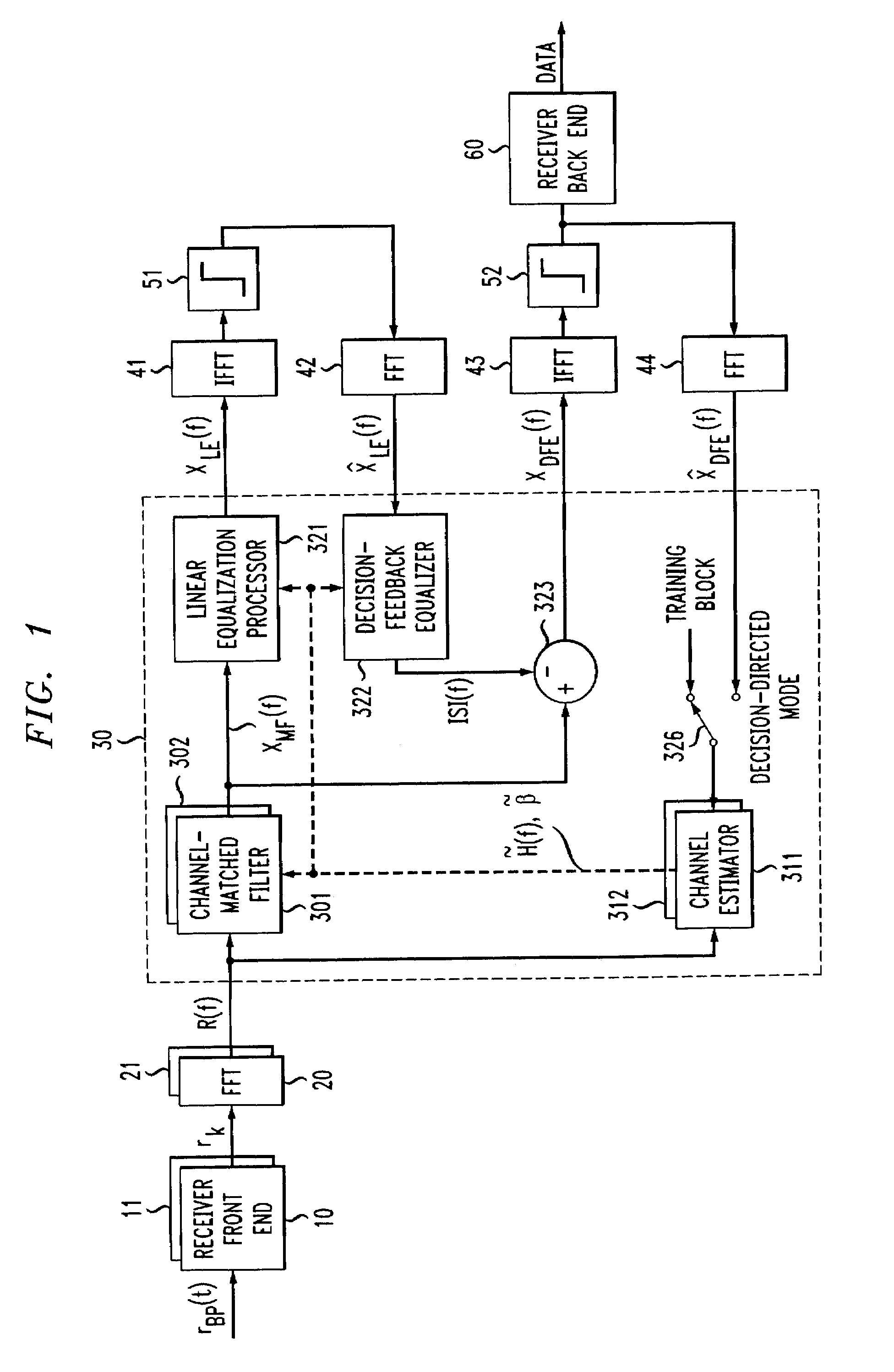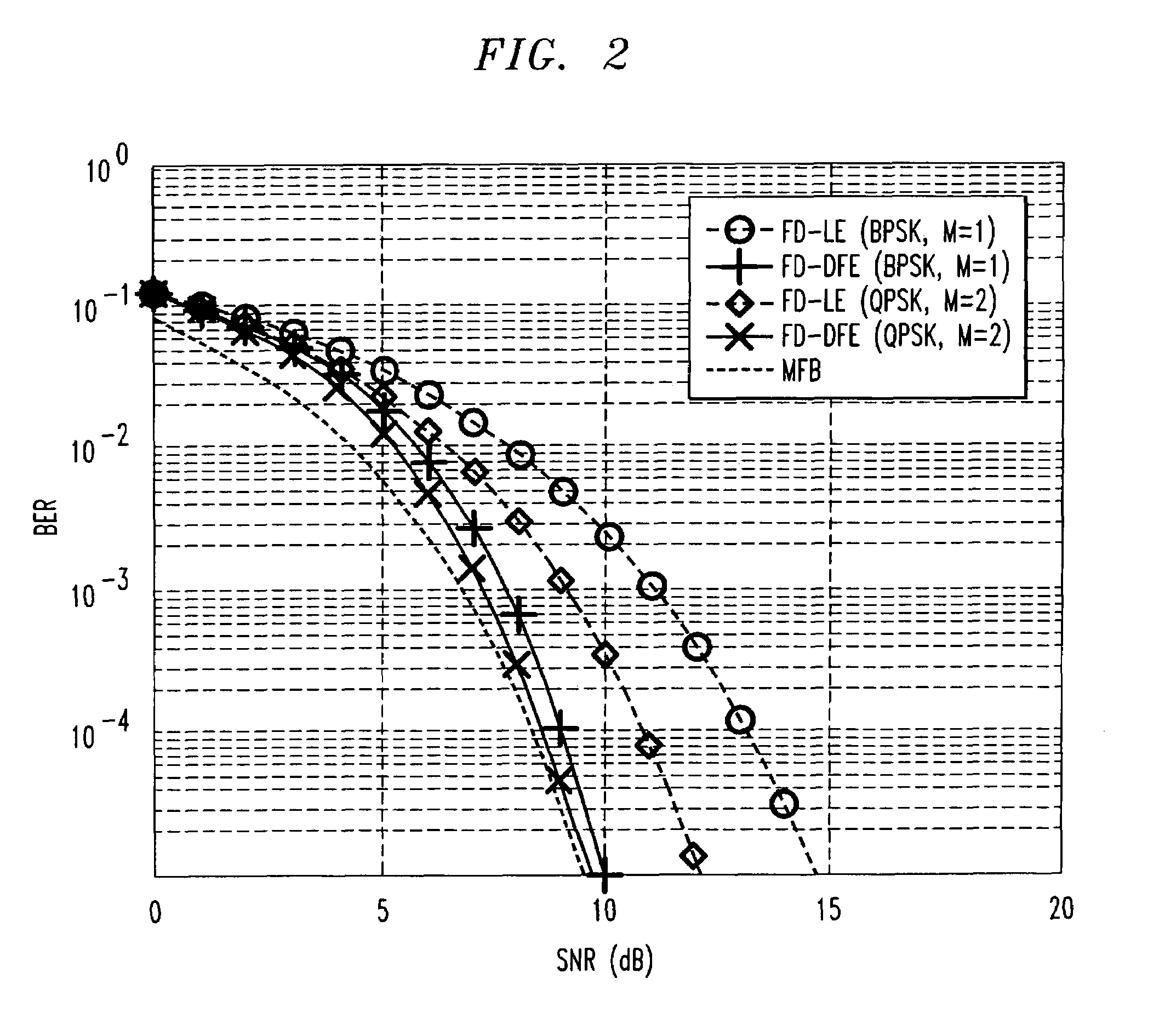Frequency domain decision feedback equalizer
- Summary
- Abstract
- Description
- Claims
- Application Information
AI Technical Summary
Benefits of technology
Problems solved by technology
Method used
Image
Examples
Embodiment Construction
[0021]The receiver of FIG. 1 is illustratively a receiver in a cellular telephone or base station. It is assumed in the first instance that the receiver is not operating with diversity reception. That is, there is only one antenna and thus only one received signal.
[0022]A receiver front end 10 receives a radio-frequency signal rBP(t) from the channel. That signal illustratively carries PSK symbols representing baseband data. The channel, and the characteristics of the signal itself, are such that the received signal contains a significant amount of intersymbol interference. Front end 10 performs such conventional processing as automatic gain control, demodulation and sampling, so as to provide blocks of time domain samples of the received signal to fast Fourier transform (FFT) block 20. Illustratively the sampling is such as to provide two samples per symbol interval, each block thus comprising 2N samples rk for k=0, 1, . . . 2N−1. The use of 2N samples rather th...
PUM
 Login to View More
Login to View More Abstract
Description
Claims
Application Information
 Login to View More
Login to View More - R&D
- Intellectual Property
- Life Sciences
- Materials
- Tech Scout
- Unparalleled Data Quality
- Higher Quality Content
- 60% Fewer Hallucinations
Browse by: Latest US Patents, China's latest patents, Technical Efficacy Thesaurus, Application Domain, Technology Topic, Popular Technical Reports.
© 2025 PatSnap. All rights reserved.Legal|Privacy policy|Modern Slavery Act Transparency Statement|Sitemap|About US| Contact US: help@patsnap.com



